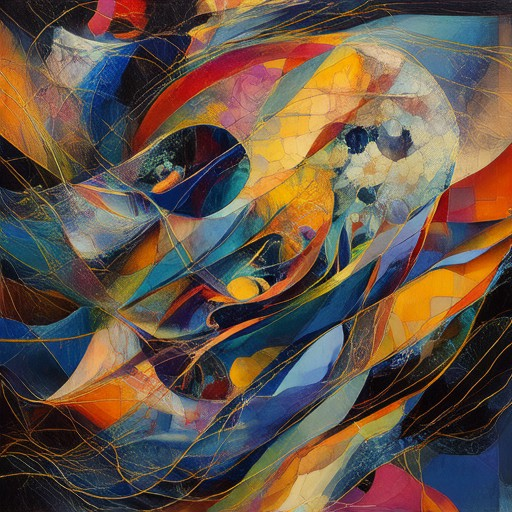Visual storytelling has become a cornerstone of modern communication, offering creators and businesses alike powerful tools to convey messages in a dynamic and engaging way. Whether you’re crafting a compelling video, designing a campaign, or sharing a personal tale, mastering the art of visual storytelling can elevate your work to new heights. From leveraging creative techniques to crafting narratives that resonate deeply with your audience, this article delves into the essential strategies and methods that every creator needs to know. Explore how visual storytelling can transform your approach, captivate your audience, and leave a lasting impact, regardless of your medium or industry.
Key Takeaways
- Master Visual Hierarchy: Guide viewers’ focus with a clear structure, starting with standout visuals and ending with details.
- Craft Compelling Stories: Use visuals to narrate engaging tales that resonate emotionally with your audience.
- Evoke Emotions with Color and Symbolism: Choose hues and symbols that align with your message to deepen connections.
- Show, Don’t Tell: Use visuals to illustrate ideas, enhancing understanding for diverse audiences.
- Resonate with Your Audience: Tailor visuals to reflect demographics, building trust and deeper engagement.
- Incorporate Motion and Interaction: Use dynamic elements to captivate and encourage engagement.
- Maintain Consistent Style: Ensure cohesion in visuals through fonts, colors, and layout for brand recognition.
- Effectively Use Data Visualization: Simplify complex info into digestible formats like charts and graphs.
- Engage with Clear CTAs: Motivate actions with directional cues like buttons or icons.
- Plan Thoroughly: Define messages and audiences, ensuring consistency in theme and style.
- Choose the Right Medium: Align visuals with platforms and audiences, using high-quality images or detailed infographics.
- Design for Emotional Impact: Use colors and symbols to evoke specific feelings, enhancing relatability.
- Structure Stories with Flow: Use narrative arcs and smooth transitions to maintain interest.
- Tailor Content Strategically: Customize visuals based on audience needs, from clear diagrams to motivational imagery.
- Add Interactive Elements: Encourage participation with quizzes or clickable infographics.
- Leverage Creative Tools: Utilize tools like Canva for professional and consistent visuals.
- Test and Refine: Gather feedback to enhance clarity, engagement, and impact.
- Clarity and Simplicity: Focus on a central theme, ensuring visuals immediately convey your message.
- Build Emotional Connections: Use imagery and symbolism to inspire and engage viewers deeply.
- Follow a Story Arc: Create a logical flow from introduction to conclusion, capturing attention throughout.
- Ensure Consistency: Maintain a cohesive look to strengthen brand identity and recognition.
- Foster Active Engagement: Use interactive features to involve viewers and deepen their understanding.
- Highlight Key Elements: Draw focus with composition and framing, guiding the viewer’s eye to crucial details.
- Use Metaphors and Analogies: Relate abstract concepts to tangible images for greater relatability.
- Balance Detail andWhitespace: Avoid clutter, allowing viewers to process information effortlessly.
- Reveal Information Gradually: Build suspense with step-by-step disclosure, keeping interest piqued.
- Provide Contextual Framing: Help viewers see the bigger picture by situating information meaningfully.

Top Creative Ways to Tell a Story Visually
Telling a story visually requires creativity, innovation, and a strong understanding of how visuals communicate emotions and messages. Here are some unique and effective methods to captivate audiences with your narrative:
- Infographics and Data Visualization : Transform complex stories into simple, easy-to-understand visuals. Use charts, graphs, and maps to convey information in a way that resonates emotionally.
- Interactive Media : Engage viewers with games, quizzes, or puzzles that are tied to your story. This approach keeps the audience engaged and active in the storytelling process.
- Storytelling Through Color : Use color psychology to evoke specific emotions. For example, warm colors like red and orange can convey excitement, while cool colors like blue and green can instill calmness and trust.
- Unexpected Objects : Incorporate everyday objects in creative ways to tell a story. For instance, use a shoe to illustrate a journey or a spoon to depict a meal that tells a deeper narrative.
- Visual Metaphors : Replace literal elements with symbolic ones. A cloud might represent hope, while a storm could symbolize chaos and uncertainty.
- Emotional Icons : Use icons or symbols that carry universal meanings. For example, a heart can represent love, while a globe can signify global issues or adventures.
- Time-Lapse Videos : Show the progression of events or transformations visually. This technique is particularly effective for illustrating change over time or the evolution of a concept.
- Collaborative Art : Involve the audience in creating parts of the story. This fosters a sense of ownership and engagement, making the story more memorable.
- Abstract Art : Use abstract visuals to reflect the complexity or ambiguity of the story. This can create intrigue and encourage interpretation from the viewer’s perspective.
- Multi-Sensory Stories : Combine visuals with sounds, textures, and smells to create immersive experiences. While primarily a tactic for live performances, it can also translate to digital media through high-quality audio and detailed descriptions.
By experimenting with these methods, you can find the style that best fits your story and audience. Remember, the goal is to resonate emotionally while keeping your audience hooked from the very first frame.
How to Effectively Use Visual Storytelling Techniques
Visual storytelling is a powerful tool that combines imagery, design, and narrative to engage audiences effectively. Here’s a step-by-step guide to mastering it:
- Plan Thoroughly: Begin by defining your core message and audience. Identify the key elements you want to communicate and how visuals can best convey them. Consistency in theme and style is crucial for maintaining coherence.
- Select the Right Medium: Choose the medium that aligns with your audience and platform. For example, use high-quality images for social media posts, detailed infographics for reports, or visually rich slides for presentations.
- Evoke Emotions Through Design: Use colors, shapes, and symbols that evoke specific emotions. Research shows that certain colors like blue and green are associated with trust, while warm colors like orange and red can spark enthusiasm.
- Time and Space Your Visuals Strategically: Avoid overwhelming your audience with information. Use visuals to guide the narrative, ensuring each scene transitions smoothly to the next. Consider using frames or sequences to tell a story over time.
- Tailor Content to Your Audience: Customize visuals based on who you’re addressing. For educational content, opt for clear diagrams and flowcharts. For inspirational content, use vibrant imagery and motivational quotes.
- Incorporate Interactive Elements: Engage your audience by adding interactive elements like quizzes or clickable infographics. This encourages interaction and keeps viewers invested in the story.
- Use Tools That Enhance Creativity: Leverage digital tools like Canva, Adobe Spark, or even free apps like Piktochart to create professional-looking visuals quickly. These tools offer templates that can simplify the process while maintaining consistency.
- Test and Refine: Present your visual story to a small focus group to gather feedback. Pay attention to clarity, engagement, and overall impact. Make necessary adjustments to refine your message and enhance visual appeal.
By following these steps, you can create visual stories that not only captivate your audience but also effectively communicate your message. Remember, the goal is to create a meaningful connection that leaves a lasting impression.

Best Visual Storytelling Techniques to Captivate Your Audience
Visual storytelling is a powerful tool that can transform your content into something truly memorable. By using the right techniques, you can captivate your audience and leave a lasting impact. Here are some proven strategies to master visual storytelling:
- Use Strong Visual Hierarchy: Guide the viewer’s eye through your content with a clear hierarchy. Start with a striking image or graphic, then move to supporting visuals, and end with fine details. This technique helps the audience focus on the most important elements.
- Tell a Compelling Story: Visual storytelling often revolves around narratives. Craft a story that resonates emotionally with your audience. Use visuals to set the scene, introduce characters, and unfold the plot, keeping viewers engaged from start to finish.
- Highlight Emotions Through Color and Symbolism: Colors evoke emotions, so choose hues that align with your message. Symbols and metaphors can reinforce themes, making your content more relatable and impactful.
- Show, Don’t Tell: Instead of explaining concepts verbally, use visuals to demonstrate ideas. This makes content more intuitive and easier to understand, especially for diverse audiences.
- Use Visuals That Resonate With Your Audience: Choose images, graphics, or videos that reflect your target demographic’s interests and experiences. This builds trust and creates a deeper connection with your audience.
- Incorporate Motion and Interactivity: Motion graphics, animations, and interactive elements can make your content dynamic and engaging. These techniques capture attention and encourage viewers to interact with your material.
- Be Consistent in Style: Maintain a cohesive look across all your visuals. Whether it’s through fonts, color schemes, or layouts, consistency helps establish brand identity and makes your content more recognizable.
- Use Data Visualization Effectively: Present complex information in a simple, visually appealing way. Charts, graphs, and infographics can transform dense data into digestible stories.
- Engage Viewers with Call-to-Action (CTA) Visuals: Motivate your audience to take action with CTA visuals like buttons, arrows, or icons. Make it clear what you want them to do next, whether it’s visiting a website, sharing content, or exploring further.
By combining these techniques, you can create visual stories that not only captivate your audience but also effectively communicate your message. Remember, the goal is to resonate emotionally and provide value that keeps your audience coming back for more.

Best Visual Storytelling Techniques to Captivate Your Audience
Visual storytelling is a powerful tool that can transform your content into something truly memorable. By using the right techniques, you can captivate your audience and leave a lasting impact. Here are some proven strategies to master visual storytelling:
- Use Strong Visual Hierarchy: Guide the viewer’s eye through your content with a clear hierarchy. Start with a striking image or graphic, then move to supporting visuals, and end with fine details. This technique helps the audience focus on the most important elements.
- Tell a Compelling Story: Visual storytelling often revolves around narratives. Craft a story that resonates emotionally with your audience. Use visuals to set the scene, introduce characters, and unfold the plot, keeping viewers engaged from start to finish.
- Highlight Emotions Through Color and Symbolism: Colors evoke emotions, so choose hues that align with your message. Symbols and metaphors can reinforce themes, making your content more relatable and impactful.
- Show, Don’t Tell: Instead of explaining concepts verbally, use visuals to demonstrate ideas. This makes content more intuitive and easier to understand, especially for diverse audiences.
- Use Visuals That Resonate With Your Audience: Choose images, graphics, or videos that reflect your target demographic’s interests and experiences. This builds trust and creates a deeper connection with your audience.
- Incorporate Motion and Interactivity: Motion graphics, animations, and interactive elements can make your content dynamic and engaging. These techniques capture attention and encourage viewers to interact with your material.
- Be Consistent in Style: Maintain a cohesive look across all your visuals. Whether it’s through fonts, color schemes, or layouts, consistency helps establish brand identity and makes your content more recognizable.
- Use Data Visualization Effectively: Present complex information in a simple, visually appealing way. Charts, graphs, and infographics can transform dense data into digestible stories.
- Engage Viewers with Call-to-Action (CTA) Visuals: Motivate your audience to take action with CTA visuals like buttons, arrows, or icons. Make it clear what you want them to do next, whether it’s visiting a website, sharing content, or exploring further.
By combining these techniques, you can create visual stories that not only captivate your audience but also effectively communicate your message. Remember, the goal is to resonate emotionally and provide value that keeps your audience coming back for more.
How to Effectively Use Visual Storytelling Techniques
Visual storytelling is a powerful tool that combines imagery, design, and narrative to engage audiences effectively. Here’s a step-by-step guide to mastering it:
- Plan Thoroughly: Begin by defining your core message and audience. Identify the key elements you want to communicate and how visuals can best convey them. Consistency in theme and style is crucial for maintaining coherence.
- Select the Right Medium: Choose the medium that aligns with your audience and platform. For example, use high-quality images for social media posts, detailed infographics for reports, or visually rich slides for presentations.
- Evoke Emotions Through Design: Use colors, shapes, and symbols that evoke specific emotions. Research shows that certain colors like blue and green are associated with trust, while warm colors like orange and red can spark enthusiasm.
- Time and Space Your Visuals Strategically: Avoid overwhelming your audience with information. Use visuals to guide the narrative, ensuring each scene transitions smoothly to the next. Consider using frames or sequences to tell a story over time.
- Tailor Content to Your Audience: Customize visuals based on who you’re addressing. For educational content, opt for clear diagrams and flowcharts. For inspirational content, use vibrant imagery and motivational quotes.
- Incorporate Interactive Elements: Engage your audience by adding interactive elements like quizzes or clickable infographics. This encourages interaction and keeps viewers invested in the story.
- Use Tools That Enhance Creativity: Leverage digital tools like Canva, Adobe Spark, or even free apps like Piktochart to create professional-looking visuals quickly. These tools offer templates that can simplify the process while maintaining consistency.
- Test and Refine: Present your visual story to a small focus group to gather feedback. Pay attention to clarity, engagement, and overall impact. Make necessary adjustments to refine your message and enhance visual appeal.
By following these steps, you can create visual stories that not only captivate your audience but also effectively communicate your message. Remember, the goal is to create a meaningful connection that leaves a lasting impression.

Best Visual Storytelling Techniques
Visual storytelling is a powerful medium that captures attention and communicates ideas effectively. Here are some proven techniques to master it:
- Clarity and Simplicity : Start with a clear central idea and simplify your message. Use visuals that immediately convey your story’s core theme.
- Emotional Connection : Appeal to emotions through color, imagery, and symbolism. Colors evoke feelings, while symbols carry deeper meanings.
- Story Structure : Follow a narrative arc—introduce, develop, climax, and conclude. Guide viewers through your story with a logical flow.
- Consistency in Style : Maintain a cohesive look by using consistent colors, fonts, and layouts. This builds brand recognition and keeps your audience engaged.
- Engage Viewers Actively : Use interactive elements like hover effects or clickable infographics to encourage participation and deepen understanding.
- Highlight Key Elements : Use framing, cropping, and composition to draw attention to important details. Guide the viewer’s eye to the most critical parts of your content.
- Use Metaphors and Analogies : Relate abstract concepts to tangible images. This helps complex ideas become more relatable and memorable.
- Balance Detail and Whitespace : Avoid clutter by leaving ample negative space. This creates breathing room and allows viewers to process information more easily.
- Time Release : Gradually reveal information to maintain curiosity and keep viewers interested. Build suspense by unfolding your story step by step.
- Contextual Framing : Present information within a meaningful context. This helps viewers understand how pieces fit together and see the bigger picture.
Mastering these techniques requires practice and experimentation. Tools like Artfull Journey offer resources and tutorials to help you refine your skills. Explore their platform to discover more creative tools and insights for visual storytelling.
Remember, the goal is to communicate effectively while inspiring and engaging your audience. With dedication and the right approach, you can create stories that leave a lasting impact.




0 Comments